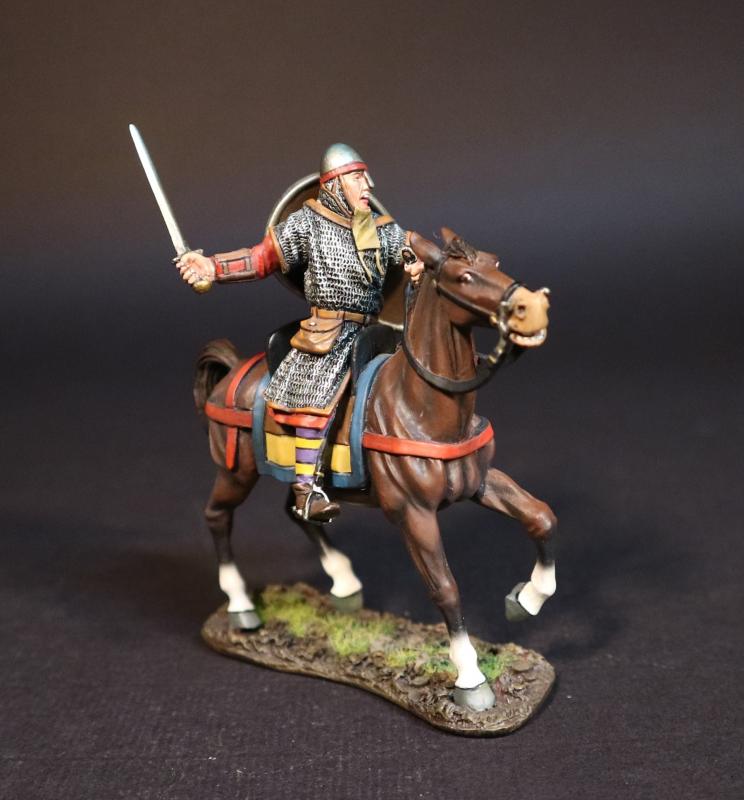Alan Rufus, Norman Army, The Age of Arthur--single mounted figure
$108.00
Item Number: NM-50
Alan Rufus, Norman Army, The Age of Arthur
THE AGE OF ARTHUR
THE BATTLE OF HASTINGS 1066
THE NORMAN ARMY
The 1066 Norman army included many groups of knights who were trained to fight side by side under the same leaders. This meant they were disciplined and skilled in co-ordinating “feigned flight”, and then turning and cutting down their pursuers.
All the sources agree that the battle of Hastings was a very bloody affair. The Battle began at 9am on Saturday 14th October 1066, and both sides were still engaged at dusk, which was around 5pm. The Anglo-Saxon Chronicle, speaks of “great slaughter on both sides”. William of Poitiers, describing the aftermath, wrote that “far and wide, the earth was covered with the flower of the English nobility and youth, drenched in blood”.
For the Godwinson family in particular, the battle was catastrophic, for not only King Harold, but two of his younger brothers, Leofwine and Gyrth, were among the fallen. (Another brother, Tostig, had been killed three weeks earlier at Stamford Bridge). It is estimated that the Norman Army 7,000 strong, suffered around 2,000 casualties.
ALAN RUFUS
Alan Rufus (c. 1040 -1093) was a Breton nobleman, cousin and companion of William the Conqueror during the Norman conquest of England. He was the second son of Eozen Penteur, a Count of Brittany, and an older maternal first cousin of Edward King of England.
During the Battle of Hastings, there is evidence that Alan Rufus led William’s Household Knights whilst Alan’s brother Breon led the left wing. This put Alan in the perfect position to co-ordinate feints with his brother. Breon would draw the inexperienced Saxon fyrdmen forward, and the other would follow in behind and isolate the pursuing Saxons. This was a modification of tactics used by the Bretons for many years. An example being the Battle of Jengland 851 CE.
Several documents refer to Gyrth Godwinson, Harold’s younger brother and Earl of East Anglia, leading an assault on William’s position. William’s horse was cut down from under him. Gyrth, seeing this, moved to kill him, but someone stopped him, and Gyrth was killed instead. Without the experienced leadership of Gyrth at the front of the shield wall, and since Harold’s other younger brother Leofric Earl of Essex had already fallen, this probably proved decisive factor in the English defeat.
William’s chroniclers say he cut down Gyrth, but Domesday evidence tells us that one of William’s Breton allies rode to his rescue, either Ralph “the Staller”, or Alan Rufus. Alan Rufus and many of the Breton Knights were to be granted considerable land holdings by William the Conqueror in return for their services. Rufus would receive land in Northern England and later he would build Richmond Castle. Many of Alan Rufus’s early acquisitions in England included many land titles that had been in the possession of King Harold’s wife Edith the Fair, including all but one of her holdings in Cambridgeshire. By 1086, Alan had become one of the richest and most powerful men in England.
Released in AUGUST 2024.
